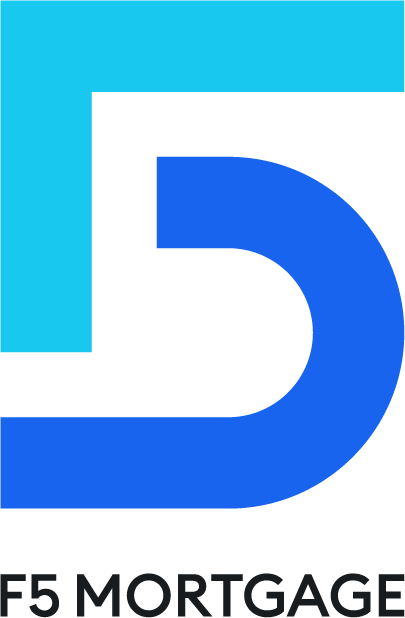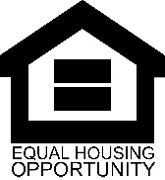When you have paid down your primary mortgage, you can borrow money against your home equity to pay for other needs, such as consolidating debt, making home improvements, or even affording a down payment on another home.
You have several options when it comes to borrowing more money from your equity: a home equity loan (HEloan) or a home equity line of credit (HELOC). While both are a type of second mortgage, they have different purposes and stipulations.
Today, we’ll compare HELOCs and home equity loans so that you can understand how both work and make the right decision for your personal finance goals.
What is a Home Equity Loan?
A home equity loan is one lump sum payment from your equity. The amount of funding you can access depends on how much home equity you have to create a combined loan-to-value ratio of both loans taken out on your house. The loan-to-value ratio is calculated by dividing your outstanding mortgage balance by the appraised value of your home.
With a home equity loan, you will make fixed monthly payments on your first and second mortgages, which may have different interest rates. A home equity loan typically has a fixed interest rate, which is influenced by your credit score and current debt burden. Like your original mortgage, you’ll also have to pay a down payment and closing costs.
The repayment period for a home equity loan can vary significantly. While some loans may have a term as short as five years, others may extend up to 30 years, depending on the lender. So, ensure you explore your options carefully.
Pros of HELoan
- Easier to Budget: A home equity loan has a fixed interest rate and fixed payments, making it easier to budget since you can predict your monthly payments accurately.
- Good for Project Financing: Receiving a lump sum payment makes a home equity loan ideal for financing a home improvement project. Investing in your home this way can also increase its fair market value, potentially earning you more when you’re ready to sell.
- Lower Interest Rates: Home equity loans generally have lower interest rates compared to the original mortgage or a HELOC. Although you will still pay interest, the lower rates mean that interest is a smaller component of your monthly payment, allowing you to repay the loan faster than with a HELOC.
Cons of HELoan
- Limited Access to Funds: While a home equity loan can be a valuable financial tool, you generally can only access some of your home equity. Unless you have a low loan-to-value ratio, the process of applying and paying a down payment may not be worth it.
- Increased Debt Burden: Adding home equity loan payments to your existing mortgage will increase your debt burden. If your gross monthly income is already low, you may struggle to pay the home equity loan and mortgage payments.
- Interest Accrues on Entire Loan Amount: You’ll be paying interest on the whole loan amount, including your first home loan. While the interest charges are lower on this loan type, they will still significantly impact your budget.
- Risk of Default: If property values in your area drop, you may default, potentially leaving you with negative equity. Since your property secures a home equity loan, failure to repay your debts could result in losing your home.
What is HELOC?
A home equity line of credit (HELOC) is a revolving credit line collateralized by your home’s equity. In some respects, it is similar to credit cards, which are also a revolving line of credit where you can borrow money each month up to a certain limit.
The difference between a HELOC and credit card debt is that there is a draw period during which you make interest-only payments, usually 10 years. When the fixed repayment period begins, usually 20 years, you will make payments on the principal balance.
HELOCs generally have variable interest rates, meaning you will have fluctuating monthly payments. You will not have to make a down payment, though you will pay closing costs.
Pros of HELOC
- Greater Control Over Funds: A home equity line of credit (HELOC) allows you to borrow only what you need each month, up to a predetermined limit. This flexibility provides greater control over your funds and can be particularly useful for ongoing expenses like medical debt.
- Interest Only on Used Funds: You pay interest only on the amount of money you use rather than on the total available credit.
- Interest-Only Payments During Draw Period: You only make interest payments until the draw period ends, which can be helpful if you are struggling with high-interest debt like personal loans or credit cards. This period can also give you time to save up and repay the principal.
Cons of HELOC
- Variable Interest Rate: Home equity lines of credit (HELOCs) typically have variable interest rates, making it difficult to predict your monthly payments. This rate can be challenging if you have multiple other debts to manage, including your mortgage.
- Potential for Negative Equity: As with home equity loans, you borrow against your home. If property values in your area drop, you may end up with negative equity, increasing the risk of default.
- High Payment at End of Draw Period: During the draw season, you make interest-only payments. This means that you could be left with a large loan principal to repay at the end of the draw period, potentially putting you at risk of foreclosure.
- Loss of Equity as Financial Safety Net: Using a HELOC reduces the equity in your home, leaving you with less financial cushion should another financial difficulty arise, increasing the risk of bankruptcy.
- Risk of Overborrowing: When borrowing cash, it’s critical to be mindful of the drawbacks and avoid taking on more debt than you can afford. This scrutiny includes knowing the potential for large future payments and the impact on your overall financial health.
Lender Minimum Requirements
Home equity loans and HELOCs have minimum requirements that vary from lender to lender, just as with primary home loan products. However, these are the common standards you should consider when considering a HELOC vs home equity loan.
HELOC Minimum Requirements
A home equity line of credit (HELOC) generally has these basic requirements:
- Credit Score – Most lenders prefer a credit score closer to 680 or higher, though some will extend credit to those with scores as low as 620. The lower your score, the higher your interest rate will be. Depending on the rest of your borrowing profile, a lender may want 700 or more.
- Debt-to-income Ratio – Expect to have a DTI of 43% or less.
- Loan-to-Value Ratio – Most lenders require an 80% LTV, though some will accept 85%. This means that you need 15% to 20% home equity.
- Payment History – You are likely to be denied if you have a history of late payments. You can’t have had any bankruptcies within the last three years at minimum, but some lenders will deny you if you’ve had a bankruptcy in the last seven years.
- Proof of Income – Your income should be sufficient to pay the HELOC and mortgage.
HELOAN Minimum Requirements
A home equity loan generally has less rigorous standards than a HELOC, though many of the requirements are essentially the same.
- Credit Score – Aim for a 680 score, though you may be able to get approved with a lower score from some institutions, like credit unions.
- Debt-to-Income Ratio – Your DTI should be no more than 45%, a bit higher than a HELOC.
- Loan-to-Value Ratio – An 80% LTV or less is preferred, but you may be able to get one with an 85% LTV. This ratio means you must have 15% to 20% home equity.
- Payment History – The lender wants to see that you can make consistent home payments and haven’t had any bankruptcy filings in recent years.
- Income – The home equity loan should not push your DTI too high, so you will need to prove that you have sufficient income to cover your debts.
HELoan vs HELOC: Which One to Choose?
When considering a HELOC vs. home equity loan, you must consider your goals for accessing one and the amount you can receive with each option.
First, let’s look at the similarities. Both have an extensive approval process that’s quite similar to an original home loan. You will need to apply, submit paperwork, and wait for approval before you can receive your funds.
Just as when you first bought your home, you will need to get an appraisal so that the loan officer knows exactly how much your property is worth; this allows them to accurately assess the LTV and, therefore, whether you qualify.
You will also need to pay closing costs, as extensive work is required to originate these types of loans. These closing costs can be up to 7% of the total loan. Some lenders’ requirements for your second loan will be stricter, including your minimum credit score and DTI.
There are also differences between the two products, mostly in how much you can borrow, what interest rates you will receive, and how long you have to repay your balance. Consider these points when choosing between a home equity credit line and a home equity loan.
-
Maximum Loan
Your combined loan-to-value ratio can generally be at most 85% for a HELOC, while some lenders allow you up to 90% for a home equity loan. This ratio varies by lender, so you will need to discuss their expectations ahead of time before applying.
-
Interest Rates
A home equity loan will generally have a better interest rate. Home equity loans have a fixed interest rate and a fixed payment schedule, while HELOC rates are variable. Your bill will change depending on how much of the revolving debt you used.
-
Terms
Home equity loans generally have a term of five years, though depending on your lender, this may be as high as 30 years.
With a HELOC loan, you usually have a draw period of 10 years in which you can spend your credit line. During this time, you will only pay the interest on what you have borrowed per month. At the end of the period, you will have 20 years to pay back the principal.
-
Can You Have Both HELoan and HELOC?
It is possible to have both HELOCs and home equity loans simultaneously, but it’s uncommon. Whether you can get both at the same depends on your current LTV and the lender’s requirements. You cannot borrow the maximum on either the home equity loan or the HELOC lest your LTV gets too high.
The difficulty is that you would pay three different types of loans: the first mortgage, home equity loan, and HELOC. The home equity loan will have a fixed interest rate and fixed payments, the HELOC will have a variable interest rate and variable payments, and your mortgage will either have a fixed or variable interest rate.
This mortgage can make it difficult to track your payments and stick to a budget, potentially putting you at risk of default.
If you’re interested in having a home equity loan and a HELOC at the same time, talk to a financial advisor to discuss whether it’s a good choice for you.
Alternatives to Home Equity Line of Credit and Home Equity Loans
If you have pressing needs, decent home equity, and do not want to take a personal loan, you have another option: cash-out refinance.
With cash-out refinancing and home equity loans, you benefit from your home equity, but the difference is how many loans you have.
A cash-out refinance closes out your first home loan and replaces it with a second, larger one that covers the home’s entire value. You will then receive the difference between the first loan and your home equity as one lump sum, which you can then use just as you would a home equity loan.
The advantage of cash-out refinancing versus a home equity loan is that you will only need to make one monthly payment: your mortgage. Home equity loans do not replace your original mortgage; instead, they are an additional loan borrowed against the property’s equity.
Having only one loan makes it easier to stay on track with your finances and reduces your risk of default, as you will not need to juggle two monthly payments with different rates.
Summary
If you’ve built up sufficient equity and want to use it, you have numerous options, including exploring a HELOC vs. home equity loan.
At F5 Mortgage, we want to help you make the best decisions possible for your financial situation. Contact us today to discuss your refinancing and second mortgage options. When you’re ready, you can request a free quote from our team to get a better idea of what you can afford.
If you’re just looking, feel free to check out today’s rates on various mortgage products, including FHA loans, VA loans, jumbo mortgages, and fixed-rate or variable-rate conventional mortgages.
FAQs
Is HELOC or HELOAN Better for Ongoing Expenses?
Home equity lines of credit are a better option if you have unpredictable expenses, as they are a revolving debt like a credit card. You can borrow money as needed each month, up to your credit limit. A home equity loan is only one large payment, which you must then budget according to your needs.
Are HELOCs Harder to Qualify for Than HELoans?
Both home equity loans and HELOCs have a similar qualification process, but a home equity line of credit will generally have stricter requirements because they are riskier for the lender.
If I Want a Fixed Interest Rate, Should I Choose a HELOC or a HELOAN?
Home equity loans are typically fixed-rate loans, while HELOCs are typically variable-rate loans. A fixed-rate HELOC is possible, but it is much rarer. Because of this, you should select a home equity loan if you want a fixed monthly payment to better budget for your needs.








